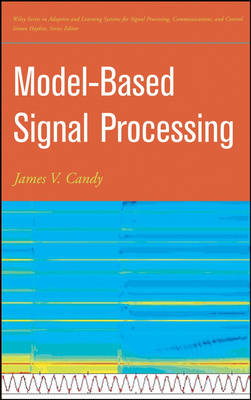Adaptive and Learning Systems for Signal Processing, Communications and Control
1 total work
This book contains a unique treatment of signal processing using a model-based perspective. Signal processing is primarily aimed at extracting useful information, while rejecting the extraneous from noisy data. If signal levels are high, then basic techniques can be applied. However, low signal levels require using the underlying physics to correct the problem causing these low levels and extracting the desired information. Model-based signal processing incorporates the physical phenomena, measurements, and noise in the form of mathematical models to solve this problem. Not only does the approach enable signal processors to work directly in terms of the problem's physics, instrumentation, and uncertainties, but it provides far superior performance over the standard techniques. Model-based signal processing is both a modeler's as well as a signal processor's tool. "Model-Based Signal Processing" develops the model-based approach in a unified manner and follows it through the text in the algorithms, examples, applications, and case studies.
The approach, coupled with the hierarchy of physics-based models that the author develops, including linear as well as nonlinear representations, makes it a unique contribution to the field of signal processing. The text includes parametric (e.g., autoregressive or all-pole), sinusoidal, wave-based, and state-space models as some of the model sets with its focus on how they may be used to solve signal processing problems. Special features are provided that assist readers in understanding the material and learning how to apply their new knowledge to solving real-life problems. This book provides a unified treatment of well-known signal processing models including physics-based model sets. Simple applications demonstrate how the model-based approach works, while detailed case studies demonstrate problem solutions in their entirety from concept to model development, through simulation, application to real data, and detailed performance analysis. The summaries provided with each chapter ensure that readers understand the key points needed to move forward in the text as well as MATLAB[registered].
It includes notes that describe the key commands and toolboxes readily available to perform the algorithms discussed. The references lead to more in-depth coverage of specialized topics. The problem sets test readers' knowledge and help them put their new skills into practice. The author demonstrates how the basic idea of model-based signal processing is a highly effective and natural way to solve both basic as well as complex processing problems. Designed as a graduate-level text, this book is also essential reading for practicing signal-processing professionals and scientists, who will find the variety of case studies to be invaluable.
The approach, coupled with the hierarchy of physics-based models that the author develops, including linear as well as nonlinear representations, makes it a unique contribution to the field of signal processing. The text includes parametric (e.g., autoregressive or all-pole), sinusoidal, wave-based, and state-space models as some of the model sets with its focus on how they may be used to solve signal processing problems. Special features are provided that assist readers in understanding the material and learning how to apply their new knowledge to solving real-life problems. This book provides a unified treatment of well-known signal processing models including physics-based model sets. Simple applications demonstrate how the model-based approach works, while detailed case studies demonstrate problem solutions in their entirety from concept to model development, through simulation, application to real data, and detailed performance analysis. The summaries provided with each chapter ensure that readers understand the key points needed to move forward in the text as well as MATLAB[registered].
It includes notes that describe the key commands and toolboxes readily available to perform the algorithms discussed. The references lead to more in-depth coverage of specialized topics. The problem sets test readers' knowledge and help them put their new skills into practice. The author demonstrates how the basic idea of model-based signal processing is a highly effective and natural way to solve both basic as well as complex processing problems. Designed as a graduate-level text, this book is also essential reading for practicing signal-processing professionals and scientists, who will find the variety of case studies to be invaluable.
